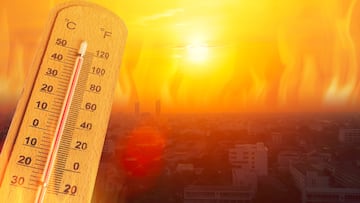Late-summer heat wave: Which states will see record-high temperatures in late-August?
A late-summer heat wave will raise temperatures in parts of the United States to record highs, as severe thunderstorms hit other areas of the country.


Parts of the United States will experience record-high temperatures this week as a late-summer heat wave rolls through the Midwest and spreads to the East Coast.
The National Weather Service said the heat wave brought high temperatures to most parts of the Midwest on Tuesday, and will expand eastward and southward through Thursday.
READ ALSO: Watch the Parade of the Planets 2024: live
Late-summer heat wave: Which states will see record-high temperatures in late-August?
Maximum heat indexes between 105 and 115 degrees Fahrenheit have been recorded in the Midwest, including Michigan, Ohio, Indiana, Illinois, Iowa, Wisconsin and Missouri, as well as the lower Great Lakes. The heat index combines the actual air temperature with relative humidity to give a better sense of how hot a human body feels.
The heat wave’s expansion will bring potentially excessive heat to the Ohio and Tennessee Valleys, parts of the Appalachians and the Mid-Atlantic region.
Nashville is expected to register more than 100 degrees Fahrenheit on Wednesday, while temperatures in Washington D.C. could reach a high of 99 degrees.
The weather agency advises people who work outdoors in affected areas to take breaks in the shade and drink plenty of water even if they are not thirsty.
READ ALSO: The affected areas in Michigan’s severe thunderstorm
More than 80 million Americans in the Heartland are suffering from a dangerous heat wave that is breaking records. The heat has also fueled powerful storms, leaving over 300,000 homes and businesses without power. @PerezReports has more. https://t.co/77tV64cimg pic.twitter.com/OUDVBsRfX3
— World News Tonight (@ABCWorldNews) August 28, 2024
Northeastern parts of the U.S. to see stormy weather
Meanwhile, severe thunderstorms are expected to affect New York and Philadelphia and bring down temperatures.
Related stories
Major Northeast cities are not expected to experience a heat wave, which is defined as an extended period of excessively hot weather. It can vary in duration and intensity, but is usually a period of at least three consecutive days where temperatures stay above 90 degrees.
Areas to the north of the country are expected to return to normal temperatures, with only the Tennessee River Valley expected to face record high temperatures later this week.


Complete your personal details to comment